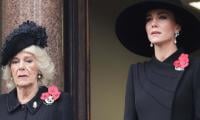State owned enterprises in Pakistan have significant market presence, particularly in key service sectors like power generation and distribution, energy, aviation, and railways.
The overall revenues of all the SOEs in FY19 was Rs4 trillion (approx) while the book value of their assets was around Rs21 trillion(excluding the financial institutions, the assets of non-financial companies were Rs16 trillion). Power-sector companies had assets of Rs7.8 trillion, infrastructure Rs5.3 trillion and oil and gas Rs2.6 trillion. The revenues that year were roughly 10 percent of nominal GDP. Additionally, SOEs provided employment to more than 450,000 people which constitutes around 0.8 percent of the total workforce. Despite their important role in providing essential public goods and services, the financial performance of several SOEs has remained unsatisfactory.
In FY19, the commercial SOEs collectively recorded net losses of Rs143 billion, which was significantly lower than net losses (Rs287 billion) incurred by SOEs in FY18. The improvement in SOEs performance was driven by the federal government’s policies including robust business growth in local up-stream oil and gas markets translating into significant gains for oil and gas companies, and some operational improvements in the power sector.
The explicit GOP support during FY19 amounted to one trillion rupees; this included guarantees, foreign and domestic loans, equity investment and subsidies. The dividends received were merely Rs60 billion on an asset base of Rs16 trillion. It should also be mentioned that the difference between the demand put forth by the Ministry of Energy for subsidies and the actual amount allocated in the budget or released adds up to the circular debt as unfunded subsidies including payments not made by the provincial governments to DISCOs. The budgetary grants to the Railways and other enterprises are in addition to this amount of one trillion shown in the SOE Annual Report.
A break-up of the aggregate net losses (net profits minus net losses) shows an interesting sectoral pattern. Oil and gas companies showed net profits of Rs242 billion while infrastructure companies (PIA, Railways, NHA, Post Office etc) ended up with net losses of Rs267 billion and power companies with Rs117 billion. All other five sectoral companies did not matter much.
The concern that the financial performance of SOEs portfolio has declined over time is evident from the fact that in 2013-14, the year for which the consolidated data of SOEs is available, SOEs recorded an overall net profit of Rs204 billion which fell to Rs61 billion in the following year and declined further to record an aggregate loss. Since FY2015-16, SOEs have consistently incurred significant losses – creating a heavy burden on the government of Pakistan’s fiscal position.
The fundamental principle to evaluate if an economic activity must be undertaken by the government itself (directly through its departments/ institutions or indirectly through an SOE) hinges on two questions: one, does the economic activity to be undertaken fall within the public policy framework of the government? And, two, can economic activity be performed by the private sector?
Based on the set of questions, an appropriate analytical framework was developed with the technical assistance of the World Bank. This is briefly discussed below.
Public Policy Framework – PPF: the PPF refers to the overall economic development priorities of the government of Pakistan. These priorities are reflected in a number of policy documents including Principles of Policy (Clause 3 of the constitution of Islamic Republic of Pakistan), and the sectoral policies like the Agriculture Policy, Industrial Policy, Trade Policy Framework etc. Moreover, important decisions regarding the institutional set-up for policy implementation are also part of the Public Policy Framework.
To attract the applicability of the PPF in the choice of SOEs for retention or privatization, it was investigated whether enterprises were performing any of the following core functions: ensuring national food security; developing and managing large-scale infrastructure requiring substantial investments; national defence and security related entities; entities established through government-to-government or inter-governmental arrangements; and entities supplying goods and services of national economic interest
Market failure: The second question in our analytical framework relates to an evaluation if an economic function can be performed by the private sector or not? Accordingly, each SOE was individually evaluated in terms of its operations and functions to assess if the function can be performed by the private sector based on existing market structure. The following aspects were duly considered while evaluating the SOEs: one, is the SOE a natural monopoly? If yes, is there an appropriate regulatory framework present to ensure socially optimal and cost-effective service delivery in case the function is performed by the private sector?
Two, is the SOE performing a function that has significant positive externalities and is therefore less profitable for the private sector to perform? Three, is there an alternate delivery mechanism available to achieve the objectives?
To further support our analysis regarding the categorization of SOEs, the recent financial performance of SOEs was taken into account to divide them into financially viable and/or financially stressed entities. A brief explanation of financial viability analysis is given below.
‘Financial viability’ refers to an organization’s ability to generate sufficient revenues to meet operating costs, debt commitments and where applicable, to allow it to invest in its business to achieve growth while maintaining desirable service levels. Financial viability is assessed through different measures that evaluate the SOE’s profitability, cash flows and its ability to continue as a going concern. Keeping the above in view, the financial viability test of SOEs was based on the following criteria:
Negative Shareholders’ Equity: any entity which has negative equity for the last three years is deemed financially stressed because its balance sheet is not bankable and therefore it is dependent on government’s support to obtain finances from the commercial banks under a government of Pakistan guarantee or direct support from the budget.
Continuous losses: any entity having losses during the last three years is also categorized as financially stressed because the losses result in dependence on government support or lead to gradual erosion of equity.
Return on Assets (ROA): one of the key measures to assess financial viability of a company is its Return on Equity (ROE). However, if shareholder’s equity is negative, a more appropriate measure is ROA which tells how well the management is utilizing the company's assets to generate earnings.
ROA is calculated by dividing net profit by total assets. As per industry standards, SOEs that do not have an ROA of five percent or above for the last three consecutive years are categorized as financially stressed.
To be continued
The writer is the author of 'Governing the ungovernable'.















